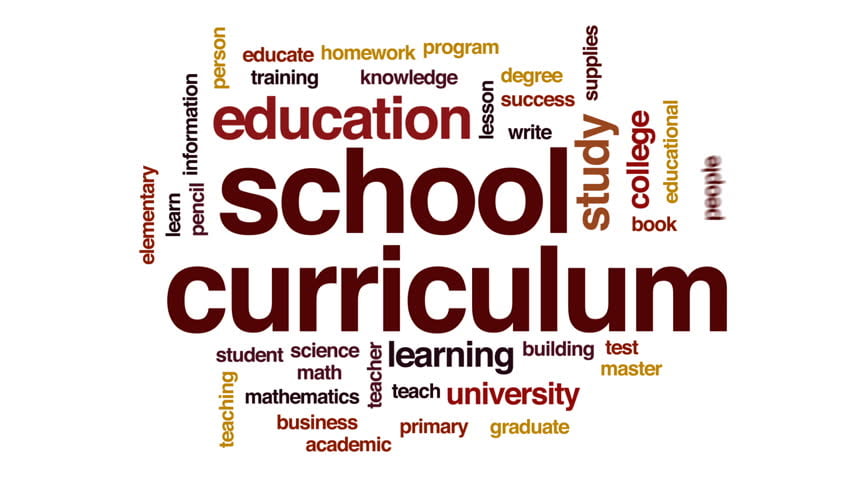I’ve seen both ends of the school curriculum spectrum—one that’s so rigid it leaves no room for creativity, and another that’s so loose it leaves students lost. The sweet spot? Somewhere in between.
A well-designed curriculum does more than just tick boxes. It should challenge students, support teachers, and prepare learners not just for exams—but for life. In my experience, the best curriculum isn’t just what’s taught. It’s how, why, and for whom it’s taught.
So, how do we create a curriculum that truly works for students? Let’s break it down.
📚 What Is a School Curriculum?

A school curriculum is the organized plan for what students learn, how they learn it, and when. It includes:
-
Subjects and content (like math, science, literature)
-
Skills and competencies (like critical thinking, collaboration)
-
Learning outcomes and assessments
-
Teaching methods and materials
At its best, the curriculum acts as a roadmap for both teachers and students—guiding instruction and learning across grade levels with purpose and cohesion.
🧱 Key Elements of a Strong School Curriculum
A curriculum designed for student success should be:
1. 🎯 Aligned with Clear Goals
Every curriculum should begin with the end in mind. Ask:
-
What do we want students to know and be able to do?
-
What skills should they master by graduation?
-
Are we preparing them for real life—not just the next test?
Clear, measurable learning objectives help keep teaching focused and purposeful.
2. 📏 Standards-Based (But Not Standardized)
It’s important to align with state, national, or international standards—but still leave room for flexibility and creativity.
The best teachers can take a standard and make it come alive through:
-
Project-based learning
-
Interdisciplinary units
-
Culturally relevant examples
-
Student-led inquiry
3. 🧠 Developmentally Appropriate
A good curriculum recognizes where students are—cognitively, socially, and emotionally—and meets them there.
That means:
-
Not pushing advanced content before students are ready
-
Incorporating social-emotional learning (SEL)
-
Balancing rigor with support and scaffolding
The goal isn’t to overwhelm students—it’s to grow with them.
4. 🌍 Inclusive and Culturally Responsive
A curriculum should reflect the diversity of students’ backgrounds, voices, and experiences.
That includes:
-
Literature from global authors
-
History that includes multiple perspectives
-
Opportunities for students to connect content to their own lives
An inclusive curriculum helps every student feel seen, respected, and engaged.
5. 💡 Skills-Based and Future-Ready
Today’s students need more than content knowledge—they need 21st-century skills like:
-
Problem-solving
-
Communication
-
Digital literacy
-
Collaboration
-
Adaptability
These can (and should) be embedded across subjects and grade levels, helping students apply their learning beyond the classroom.
6. 🔁 Flexible and Continuously Updated
Education is evolving fast—and so should the curriculum.
Whether it’s new technology, global issues, or pedagogical shifts, strong curriculum design includes:
-
Regular reviews and revisions
-
Feedback from teachers and students
-
Opportunities to pilot new ideas and reflect on outcomes
No curriculum should stay frozen for ten years. The world doesn’t work that way—neither should our classrooms.
🧩 Building a Cohesive Curriculum: Tips for Schools
If you’re part of a school team designing or refining your curriculum, here’s what’s worked for me and the teams I’ve collaborated with:
👥 1. Start with Collaboration
Don’t do this in isolation. Involve:
-
Teachers (they know what actually works)
-
Administrators
-
Parents and students
-
Community or industry voices (for relevance)
Co-created curriculum builds buy-in and ownership.
📈 2. Create Vertical Alignment
Each grade level should build on the last.
Ask:
-
Are we repeating content unnecessarily?
-
Are we preparing students for what’s next?
-
Are there gaps or overlaps across grade levels?
Curriculum mapping helps ensure consistency and progression.
🧪 3. Balance Content with Application
Memorizing facts? Important. Applying knowledge? Crucial.
Use:
-
Real-world problems
-
Service learning
-
Performance tasks
-
Cross-curricular projects
This helps students see the “why” behind what they’re learning—and makes the content stick.
🔍 4. Include Formative and Summative Assessment
Assessment should inform instruction, not just report results.
Good curriculum includes:
-
Opportunities for ongoing checks for understanding
-
Authentic assessments like presentations or portfolios
-
Clear rubrics that students can use for self-assessment
Assessment isn’t the end—it’s part of the learning journey.
🧭 Final Thoughts: Curriculum as a Living Guide
Designing a school curriculum isn’t a one-time job. It’s an ongoing, reflective process that should grow with your school community.
When it’s done well, a curriculum can:
-
Empower teachers
-
Engage students
-
Promote equity
-
Prepare learners for life—not just the next test
So whether you’re building from scratch or improving what you have, remember: the best curriculum doesn’t just deliver content. It delivers connection, meaning, and momentum for every learner.


